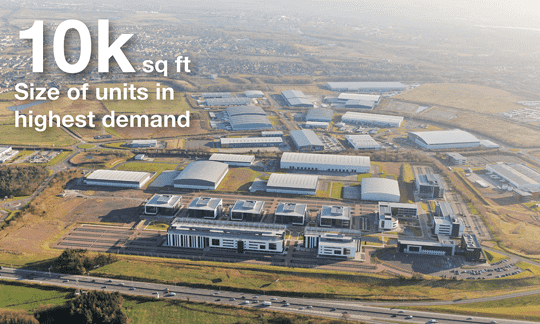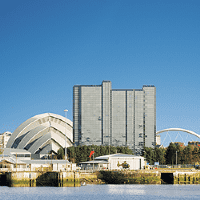Greater Glasgow is defined by its connectivity. With over 1.7 million people living within the region, road and public transport links are of great importance allowing residents to access employment, leisure and retail facilities. Many of Glasgow’s most popular residential suburbs benefit from direct, fast links to the city centre and to the large shopping centres.
Some of the £1.3 billion of City Region Deal funding has been invested in or is targeted towards strengthening this network. Improving connectivity will increase the attractiveness of existing areas and facilitate new development as a result.
Industrial
There has been considerable trading activity for well located and well let multi unit industrial estates across Glasgow and its surrounding areas, and this is set to continue throughout 2017. This increased demand for industrial space has largely come from the growth of online retail, with a need to be located close to a wide consumer catchment. Around 30% of the UK’s total industrial floorspace taken in the UK during 2016 was from internet retailer Amazon. This included taking 330,000 sq ft letting of J4M8 in Bathgate, near Edinburgh.
Traditional store-focused retailers have also been important players. Lidl have taken space at Eurocentral to create a regional distribution centre to support the growth of their in town retail.
However, it is mostly smaller logistics and distribution based schemes which will be the key drivers of demand going forward. One such scheme is Evolution Court, Hillington Park, which is made up of four separate units and will provide circa 90,000 sq ft of industrial space. The market continues to prove most active on sub 10,000 sq ft units, with well located modern product benefiting due to the lack of development.
The lack of existing modern industrial space and extremely restricted development pipeline has led to pent up demand for prime locations. This imbalance should have a positive impact on property investment and rental values for industrial properties going forward.
For an industry where infrastructure is a major driver, key improvements to complete the M8 and improve the Raith interchange will benefit the industrial market directly through improved connectivity with the Scottish and UK industrial markets.

.png)

.png)
